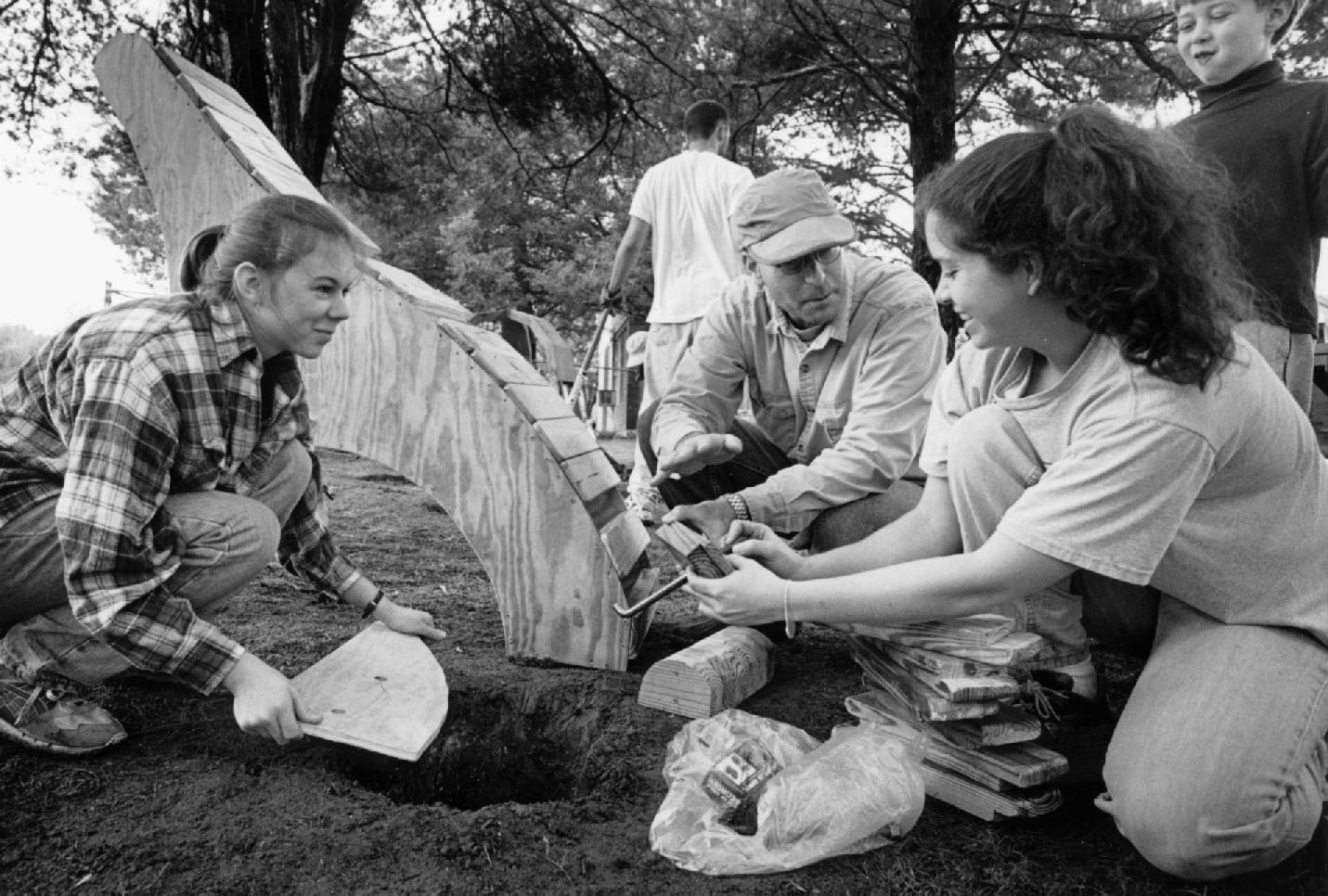Contact: Maridith Geuder

Associate professor Michael Berk discusses the playground project with students Marie Childs of Macon (l) and Rachael Alsup of Dresden, Tenn.
Sheets of plywood, two-by-fours, glue, resin, and lots of elbow grease are turning everyday construction basics into playground structures in a Mississippi State University student project.
Fifteen architecture majors in a studio class taught by associate professor Michael A. Berk were asked to use off-the-shelf products to design and build outdoor structures for a preschool playground. For the students, the project served both as a community service effort and a lesson in the use of modular pieces to make pre-assembled structures.
"I asked our students to use standard materials to create something that is sculptural," Berk said. The project also is helping introduce a larger project in which the class is researching and proposing designs for low-cost modular classroom units, he explained.
The students recently dug foundations, mixed and poured concrete, and installed the playground pieces at D.W. Aiken Village, MSU's family housing complex on College View Drive. The complex's pre-school serves about 30 kids ranging from 3 to 5 years of age.
Design teams created a range of structures, including one resembling a spider and another in a ladder-like configuration. Some pieces hug the ground, while others arch and curve above.
"These are wonderfully imaginative structures that our children will enjoy," said preschool director Tamar M. Burrell. "We are thrilled with the results. It's a project that has benefited everyone involved."
In addition to giving students grounding in academic theories with readings from such sculptors as Isamu Noguchi, the project provided "a down-to-earth look at realities," Berk said.
"The students had to analyze all of the technical aspects of the project, including looking at the structures as functional objects in the landscape," he said. "They visited the playground and evaluated how to place their pieces in relation to the site."
Each design also had to consider safety and durability issues for real-world use, including how to plan for foundations, how to treat wood and how to join parts.
MSU's campus landscape department furnished assistance and products, while the Forest Products Laboratory provided assistance with wood preservatives. Berk specifically cited the FPL's Darrel Nicholas, who shared preservatives resulting from his research.
"A project like this matures students about the process of designing," Berk said. "They learn that the limitations of budget and materials guide their vision."